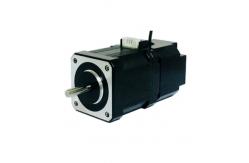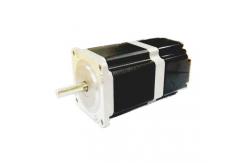57AHS140/240 Series With Brake 2 Phase Hybrid Stepper Motors
|
|
1. Products Overview Stepper motor is an executive agency that converts electrical pulses into angle displacement. You can control the angle by controlling the number of pulse to achieve the purpose of accurate position control. At the same time, you can control the speed and acceleration of the motor by controlling the input pulse frequency to achieve the purpose of the speed control. Step motor, also called as pulse motor is normally classified by structural as: reactive step motors (VR), permanent magnet step motor (PM), and hybrid step motor (HB). Step motor can also be divided into rotation and straight lines according to the form of movement. According to whether there is an encoder, can be divided as open-loop and closed-loop step motors. Reactive step motor: there are windings on the stator and rotor consisting of soft magnetic materials. The structure is simple, the cost is low, the step distance is small, and it can reach 1.2 °, but the dynamic performance is poor, the efficiency is low, the heating is large, and the reliability is difficult to guarantee. Permanent Magnet step motor: The rotor of the permanent magnet step motor is made of permanent magnet material, and the rotor is the same as that of the stator. It is characterized by good dynamic performance and large output torque, but this motor has poor accuracy and large steps (generally 7.5 ° or 15 °). Hybrid Step motor: Hybrid steaming motor integrates the advantages of reaction and permanent magnets both. It has a multi-phase windings, permanent magnet material on the rotor, and multiple small teeth on the rotor and stator to improve the step accuracy. It is characterized by large output torque, good dynamic performance, and small steps, which can meet automation applications which have high precision requirement.
According to the quantity of phases, there are two -phase, three, and five -phase step motors. The most popular is the two-phase hybrid step motor, accounting for about 97%of the market share. The reason is that the two-phase step motor is more cost-effective, and also has satisfactory performance due to subdivision or micro stepping function of its drive. The basic step angle of a two-phase step motor is 1.8 °/step. Matched with a half-step drive, the step angle is reduced to 0.9 °. Matched with a micro stepping driver, the step angle can be subdivided up to 256 times (0.007 ° per micro step), which can meet the requirement of most applications.
Taking the most used hybrid stepping motor as an example, its main features are as the followings. High loading capacity. Its speed is not affected by the load size. Unlike ordinary motors, the speed will decrease when the load is increased. The speed and position of the step motor have strict requirements. Convenient control. The step motor rotates in "step", and the digital characteristics are obvious. Simple structure. The traditional mechanical structure for speed and position control are more complicated, and it is difficult to adjust. After the adoption of step motor, the structure of the whole machine is simpler. At the same time, no need special maintenance, and the failure ratio is very low. 100% still stop, no shaking. Because the stepper motor does not depend on feedback such as position, speed, etc., when the input pulse stops, the step motor can be in an absolute stop. The servo motor cannot be absolutely stopped, so the characteristic of the stepper motor is definitely very popular in the need for high precision applications. Low noise. By proper subdivision setting, the step motor runs very smooth and the noise is small, which is especially suitable for noise sensitive applications. Of course, there are obvious disadvantages of the stepper motor, such as high running temperature. Although it does not affect the service life of the stepper motor, it is not suitable for heating sensitive applications. However, with the implement of the step drive control algorithm, the input current adjustment range is getting larger and larger, which helps to reduce the motor heating significantly.
Target Applicationds Machine tools and engraving machines The application of stepper motors in machine tools is also very common. In machine tools, stepper motors are used to control the feed and tool retraction, thereby achieving precision and speed in machining workpieces. It can achieve different processing effects, high speed, and high efficiency. Automation equipment The application of stepper motors in automation equipment is also very extensive. In automation equipment, stepper motors are used to control the position and speed of various moving components, thereby achieving automation control of the equipment. It can achieve different control effects, such as high speed and high stability. Printing machines Stepper motors are widely used in printers. In a printer, a stepper motor is used to control the movement of the print head, thereby achieving precise printing of text, images, and charts. It can achieve different printing effects, such as high definition, high speed, and high stability. Automotive components The application of stepper motors in automotive components is also very common. In automotive components, stepper motors are used to control the position and speed of car seats, rearview mirrors, windows, and doors, thereby achieving automated control of automotive components. It can achieve different control effects, such as high speed and high reliability. Optical equipment In optical equipment, stepper motors are widely used in modulators, fine-tuning, and other aspects. Because the action of stepper motors is very slow and the stepper angle can be adjusted, they are widely used in various optical positioning mechanisms, which can provide higher stability and accuracy for optical equipment. Medical devices Stepper motors are widely used in medical devices, especially in surgical instruments such as blades and cutters. The high-precision positioning of stepper motors can significantly improve the accuracy of surgery and make surgery safer. Stepper motors can also be used in devices such as pacemakers and syringes. Precision positioning applications Stepper motors can complete precise positioning tasks through quantitative motion and fixed step angles, which makes them widely used in various precision positioning equipment, such as optical equipment, textile equipment, computer embroidery machines, medical equipment, automation equipment, etc. These equipment usually require high-precision and stable positioning machinery, and stepper motors are perfect for such tasks. In summary, stepper motors can be widely used in various fields due to their characteristics of quantitative motion and fixed stepper angle, providing more precise and efficient driving force for mechanical equipment to achieve higher production efficiency and quality.
|
|||||||||||||||||||||||||||||||||||||||||||||||||||||||||||||||||||||||||||||
| Product Tags: 57AHS140/240 Series Hybrid Stepper Motors |
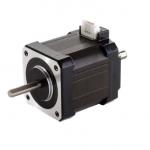
|
6 Wire 2 Phase Stepper Hybrid Motor Nema 17 Dual Shaft Stepper Motor |

|
2 Phase Single Shaft High Speed Stepper Motor Hybrid Nema 23 6 Wire Stepper Motor |
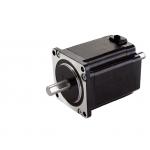
|
57AHS240 Hybrid Nema 23 Dual Shaft Stepper Motor Four Wires 2 Phase Stepper Motor |
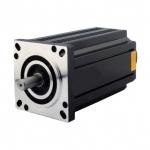
|
6 Wire Hybrid Three Phase Stepper Motor Nema 52 130mm 3130AHS3500 |
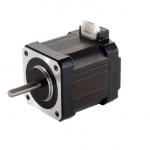
|
Hybrid High Speed Nema 17 Stepper Motor 6 Wire 2 Phase 42AHS031/043 |
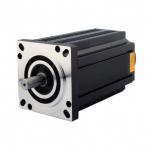
|
Hybrid 3 Phase Stepper Motor 130mm Nema 52 Stepper Motor 3130AHS2800 |

